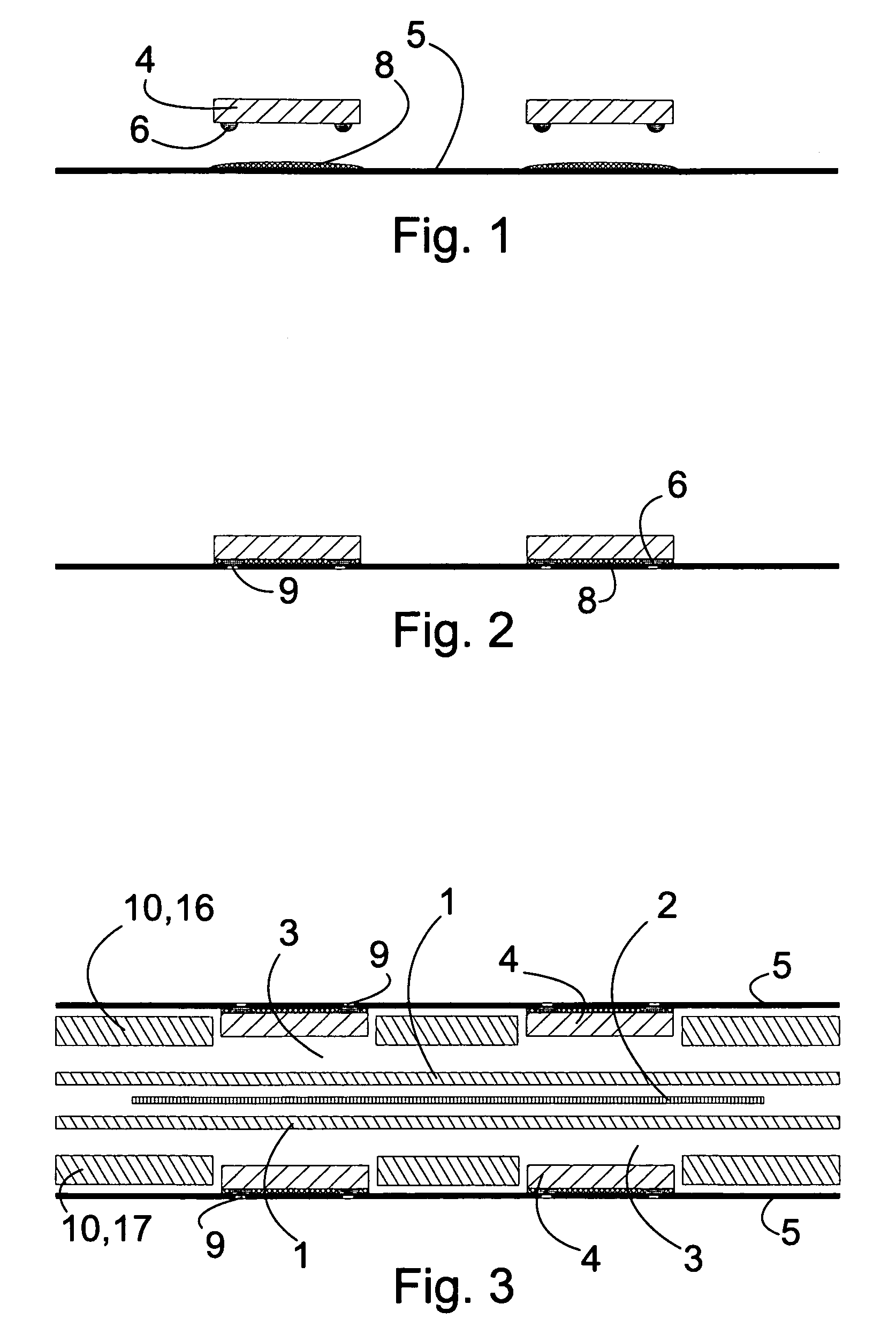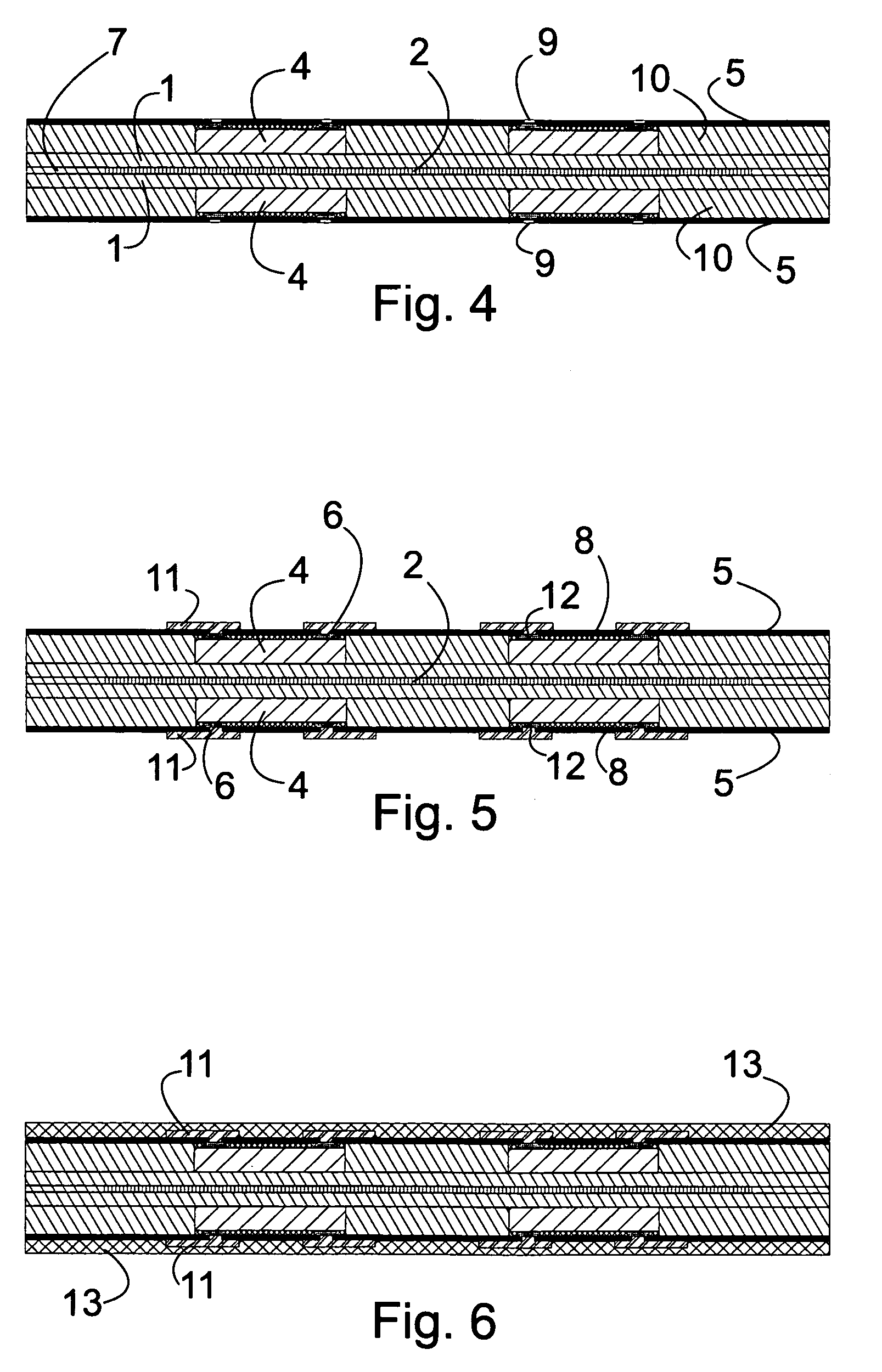Method of manufacturing a wiring board
a manufacturing method and wiring board technology, applied in the field of wiring board technology, can solve the problems of reducing throughput and cost-effectiveness, imposing restrictions on the design of wiring boards, and complicating the manufacturing process, so as to minimize the warpage of the wiring board structure, and reduce the cost of manufacturing. cost
- Summary
- Abstract
- Description
- Claims
- Application Information
AI Technical Summary
Benefits of technology
Problems solved by technology
Method used
Image
Examples
first embodiment
[0023]FIG. 1 is a first view of a schematic illustration of a method according to the present invention,
[0024]FIG. 2 is a second view of a schematic illustration of a method according to a first embodiment of the present invention,
[0025]FIG. 3 is a third view of a schematic illustration of a method according to a first embodiment of the present invention,
[0026]FIG. 4 is a fourth view of a schematic illustration of a method according to a first embodiment of the present invention,
[0027]FIG. 5 is a fifth view of a schematic illustration of a method according to a first embodiment of the present invention,
[0028]FIG. 6 is a sixth view of a schematic illustration of a method according to a first embodiment of the present invention,
[0029]FIG. 7 is a seventh view of a schematic illustration of a method according to a first embodiment of the present invention,
[0030]FIG. 8 is an eighth view of a schematic illustration of a method according to a first embodiment of the present invention,
[0031...
second embodiment
[0032]FIG. 10 is a first view of a schematic illustration of a method according to the present invention,
[0033]FIG. 11 is a second view of a schematic illustration of a method according to a second embodiment of the present invention,
[0034]FIG. 12 is a third view of a schematic illustration of a method according to a second embodiment of the present invention,
[0035]FIG. 13 is a fourth view of a schematic illustration of a method according to a second embodiment of the present invention,
[0036]FIG. 14 is a fifth view of a schematic illustration of a method according to a second embodiment of the present invention,
[0037]FIG. 15 is a sixth view of a schematic illustration of a method according to a second embodiment of the present invention,
[0038]FIG. 16 is a seventh view of a schematic illustration of a method according to a second embodiment of the present invention,
[0039]FIG. 17 is an eighth view of a schematic illustration of a method according to a second embodiment of the present ...
third embodiment
[0041]FIG. 19a is a first view of a schematic illustration of a method according to the present invention,
PUM
| Property | Measurement | Unit |
|---|---|---|
| surface area | aaaaa | aaaaa |
| electrical | aaaaa | aaaaa |
| packaging density | aaaaa | aaaaa |
Abstract
Description
Claims
Application Information
 Login to View More
Login to View More - R&D
- Intellectual Property
- Life Sciences
- Materials
- Tech Scout
- Unparalleled Data Quality
- Higher Quality Content
- 60% Fewer Hallucinations
Browse by: Latest US Patents, China's latest patents, Technical Efficacy Thesaurus, Application Domain, Technology Topic, Popular Technical Reports.
© 2025 PatSnap. All rights reserved.Legal|Privacy policy|Modern Slavery Act Transparency Statement|Sitemap|About US| Contact US: help@patsnap.com



